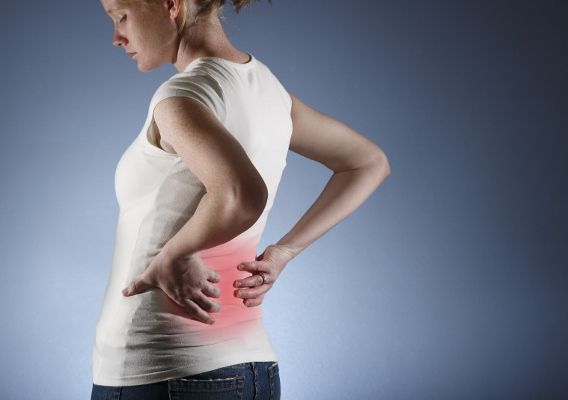Medical expert of the article
New publications
Back pain in the morning
Last reviewed: 04.07.2025

All iLive content is medically reviewed or fact checked to ensure as much factual accuracy as possible.
We have strict sourcing guidelines and only link to reputable media sites, academic research institutions and, whenever possible, medically peer reviewed studies. Note that the numbers in parentheses ([1], [2], etc.) are clickable links to these studies.
If you feel that any of our content is inaccurate, out-of-date, or otherwise questionable, please select it and press Ctrl + Enter.
A sedentary lifestyle sooner or later begins to affect a person's well-being: back pain occurs in the morning, it becomes harder to get out of bed, and it takes some time to move a little, walk around, and thereby reduce the pain. At the same time, sometimes the pain is not felt at night, and in principle you can sleep well. However, if you spend the night in an uncomfortable bed, being in one position, then in the morning you will definitely be woken up by a nagging pain in the lower back.
The cause of such malaise is osteochondrosis, which causes either a violation of the mechanics of the movement of the spinal column, or a spasm of the muscles and ligaments, or even minor changes in the small joints inside the spinal column. Thus, back pain in the morning is caused, first of all, by a spasm of the muscles, therefore there are often complaints of a girdle pain of a pulling nature, which is compared to a tightly stretched hoop. This pain can radiate to the abdominal wall and cause painful sensations in the lower abdomen.

 [ 1 ]
[ 1 ]
Diseases that cause back pain in the morning
Osteochondrosis affecting the lumbar spine often manifests itself with not very noticeable symptoms: a feeling of fatigue, slight discomfort when bending the body forward, back pain in the morning. It should be noted that over time, the painful sensations become more acute and frequent, then constant. They can also worsen during coughing and sneezing, and sometimes when you clap your hands or bend over to tie your shoelaces.
Often during the day we can notice how quickly the back gets tired if we have to stay in an upright position for a long period of time. This condition is especially noticeable in transport, when there are no free seats - at first there is a quiet, but at the same time debilitating pain of a monotonous nature, then, as it increases, it spreads to the entire spine. This is how osteochondrosis manifests itself, which affects the thoracic spine. There is an opinion that the reason lies directly in the back, since the spine is supposedly not sufficiently adapted to be in an upright position. But now scientists have realized that our ancient ancestors moved on two legs many millions of years ago. In other words, the human body has many adaptations for walking in an upright position, which enable the spine to bear significant loads.
Most of us, feeling pain in the neck, back of the head, between the shoulder blades or heaviness in the shoulder blades, feeling that the hands go numb during sleep, do not even suspect that all of the above are symptoms of progressive osteochondrosis in the cervical spine. The fact that the vertebral arteries are involved in the process and the blood supply to the brain is disrupted is also evidenced by the flickering of "flies" before the eyes when turning the head. Sometimes even the most ordinary movements can help relieve, and in some cases - completely get rid of back pain in the morning.
If you are unable to control your back pain in the mornings on your own, a doctor will help you and prescribe a course of treatment that is right for you. The doctor can prescribe manual therapy, reflexology, physiotherapy procedures that are aimed at relaxing the back muscles. Treatment of osteochondrosis should be comprehensive. It necessarily includes therapeutic exercise. It is usually recommended to do special exercises in warm water and massage the back muscles. When the pain disappears, you can start doing exercises that strengthen the ligamentous and muscular apparatus of the spine. Wearing a rigid corset will not only form a correct, and therefore beautiful, posture, but will also support the spine.
If you feel some tension and even pain in your back in the morning, it is quite possible that you are used to falling asleep on your back. The fact is that if you sleep on your back with your legs stretched out, you have an increased curve in your lower back.
Back pain in the morning, if it is not related to the injury, can occur for 2 reasons - overload of the back muscles and swelling. Therefore, it is very important not only to relieve the pain syndrome, but also to restore the resources of the back muscles, relieve swelling, and restore blood supply to the spinal cord.
If you have suffered a severe spinal injury, or if you have a long-term muscle spasm, subluxations may occur, which can lead to asymmetric contraction of the paravertebral muscles, local curvature of the spine, and the appearance of sharp pain in the corresponding area of the back. Back pain in the morning often appears immediately after sleep and can be concentrated in the neck or lower back.
But often (in 65% of cases) back pain is caused by muscle stiffness, stress, poor posture and excess weight. The symptoms are as follows: severe back pain in the morning, which gradually decreases by the middle of the day due to increased mobility. If you suddenly feel that you have back pain in the morning, then you need to seek advice and help from a traumatologist and a neurologist without putting it off.

